Complete Solutions to Exercises of chapter COULOMB LAW AND ELECTRIC FIELD of Class 12 book with complete answers and questions
| Class 12 | PHYSICS |
| Chapter | COULOMB LAW AND ELECTRIC FIELD |
| CENGAGE PHYSICS | Exercises |
| Number Of Questions | 58 |
| Academic Year | 2023-24 |
(a) How many electorns are in 1C of negative charge?
(b) Which is the true test of electrification: attraction or repulsion?
(c ) Can a body have a charge of `0.8xx10^(-19)C` ?
View SolutionIf only one charge is availabel, can it be used to obtain a charge many times greater than itself in magnitude?
View Solution(a) Can two bodies having like charge attract each other (yes/No)
(b) Can a charged body attract an unchanged body? (yes/No)
(c ) Two identical metallic spheres of exactly equal masses are taken, one is given a positive charge q and the other an equal negative charge. Their masses after charging are different. Co,,ent on the statement.
View SolutionA particle has a charge of `+10^(-12)C`.
(a) Does it contain more or less number of electrons as compared to the netual state?
(b) Calculate the number of electrons transferred to provide this charge.
View SolutionAn ebonite rod is rubed with fur and is found to have a charge of `-3.2xx10^(-8)C` on it
(a) Calculate the number of electrons transferred,
(b) What is the charge of rubbing?
View SolutionThe electric charge of macroscopic bodies is actually a surplus or defieciency of electrons. Why not protons?
View SolutionA charged rod attracts bits of dry paper, which after touching the rod often jucp away from it rapidly, Expalin
View SolutionA person standing on an ainsulating stool touches a charged insulatd conductor. Will the conductor get completely discharged?
View SolutionDefine the following statement: " if there were only one electrically charged paticle in th entire universe, the concept of electric charge would be meaningless".
View SolutionHow many megacoulombs of positive(or negative) Charge are present in 2.0 mol of neutral hydrongen gas.
View SolutionA polythene piece rubbed with wool is found to have a negative charge of `3.0xx10^(-7)C`.
(a) Estimate the number of electrons transferred (from which to which )?
(b) Is there a transfer of mass from wool to polythene?
View SolutionTwo identical conduction spheres, one having an initial charge +Q and the other initially uncharged, are brought into contact.
(a) What is the new charge on each sphere?
(b) While the spheres are in contact, a positively chaged rod is moved close to one sphere, causing a redistribution of hte charges on the two spheres so the charge on hte sphere closest to the rod has a charge-Q. What is the charge to the other sphere?
View SolutionTwo identical conducting spheres are charged by induction and then sepatatd by a large distance, sphere-1 has charge +Q and spher-2 has charge -Q. A third sphere is initially uncharged. If sphere-3 is touched to sphere-1 and sepatated and then touched to sphere-2 and separated what is the final charge on each of the three spheres?
View SolutionA table tennis ball covered with a conducting paint is suspended by a silk thread so that it hangs between tow metal plates. One plate is earthed, when the other plate is connected to a high voltage generator, what will happen to the ball.
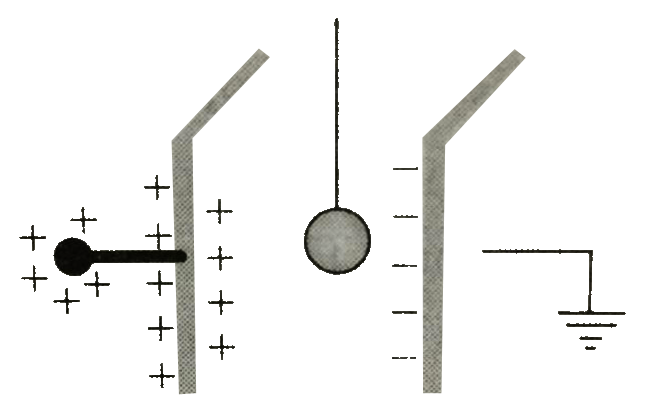
View SolutionIn 1 g of a solid, there are `5xx10^(21)` atoms. If one electrons is removed fron each of 0.01% atoms of the solid, find the charge gained by the solid (given that electronic charge is `1.6xx10^(19)C`).
View SolutionIn the arrangement shown in fig. two positive charges, `+Q` each,are fixed. Mark the correct statement(s) regarding a third charged particle `-q` place at the midpoint P that can be displaced along or perpendicular to the line connecting the charges.
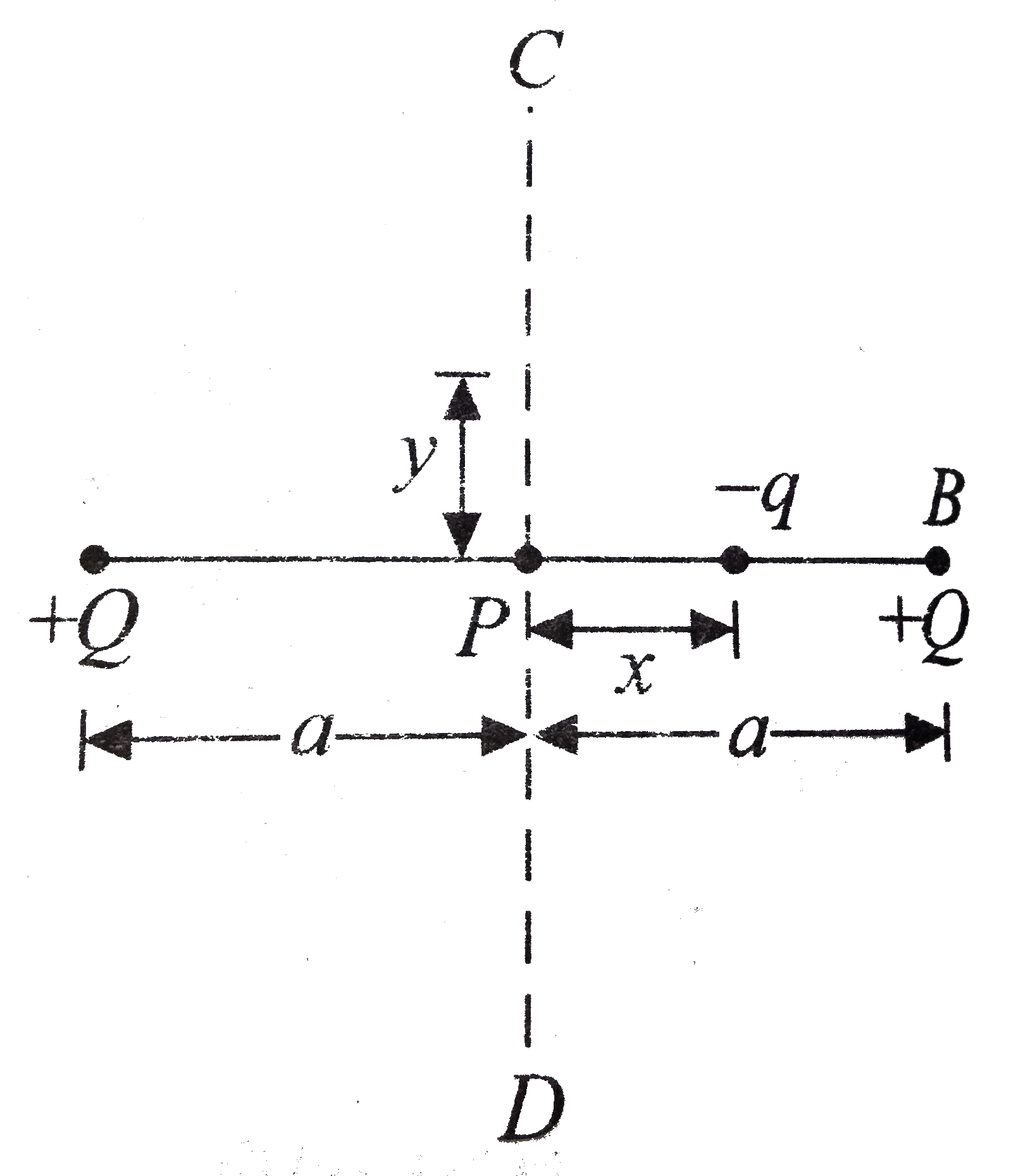
View SolutionDoes an electric ccharge experience a force due to the field produced by itself ? (yes/No)
View SolutionTwo negative charges of a unit magnitude and a positive charge q are placed along a straight line. At what position and value of q will the system be in equilibrium? (Negative charges are fixed).
View SolutionFigure shows three arrangements of an electrons e and two protons p(where Dgtd)
(a) Rank the arrangement according to the magnitude of the net electrostatic force on the electron due to the protons placing the largest first.

(b) In situation (c), is the angle between the net force on the electrons and the line labeled horiontal less than or more than `45^(@)`?
View SolutionFigure shows two charge particles on an axis. The charges are free to move. At one point, however, a third charged particle can be placed such that all three particles are in equilibrium.
(a) Is that point to the left of the first two particles to their rightm or between them?
(b) should the third paricle be positively or negatively charged?
(c ) Is the equilibrium stable or unstable?
`
View SolutionIn fig. a central particle of charge `-q` is surrounded by two circular rings of charged particle of radii r and R, with Rgtr. what is the magnitude and dirction of the net electrostatic force on the central particle due to the other particles?

View SolutionFigure shows four situations in which particles of charge +q or -q are fixed in place. In each the particles on the x-axis are equidistant from the y-axis. The particle on the y-axis experiences an electrostatic force F from each of these two particle.
(a) Are the magnitudes F of those force the same or different?
(b ) Is the magnitude of the net force on the particle on the y-axis. equal to grater than, or less than 2F?
(c ) Do the x-components of the two forces add or cancel?
(d) Do the y-components of the force add or cancel?
(e ) Is the direction of the net forcce on the middle particle that of the canceling components or the adding components?
(f) What is the direction of the net force on the middle particle ?
 ,
, 
 ,
, 
View SolutionThe force between two point electric charges kept at a distance d apart in air is F. If these charges are kept at the sme distance in water, the force between the charges is F'. The ratio `F'//F` is equal to ……….. .
View SolutionTwo small balls, each having charge q, are suspended by two insulating threads of equal length L fron a hook in an elevator. The elevator is freely falling. Calculate the angle etween the two threads and tension in each thread.
View SolutionSuppose we have a large number of identicall paricles, very small in size. Any two of them at 10cm separation repel with a force of `3xx10^(-10)N`.
(a) If one of them is at 10 cm from a group (of very small size) of n others, how strongly do you expect it to be repelled?
(b) Suppose you measure the repulsion and find it `6 xx 10^(-6)N`. How many particles were there in the group?
View SolutionThe electrostatics force of repulsion between two positively charged ions carrying equal charge is `3.7xx10^(-9)N` when these are separated by a distance of `5Å`. How many electrons are missing from each ion?
View SolutionTwo fixed point charges `+4e` and `+e` units are separated by a distance a. Where should a third point charge be placed for it to be in equilibrium?
View SolutionTwo insulated identically sized charged copper spheres A and B have their centers separated by a distance of 50 cm. A third sphere of the same size but uncharged is brought in contact with the first, then in contact with the second and finally removed from both. What is the new force of repulsion between A and B?
View SolutionTwo small balls having equal poistive charges Q( coulomb) on each are suspended by two insulating strings of equal length L(metre) from a hook fixed to a stand. The whole set up is taken in a satellite into space where there is no gravity (state of weightlessness). The angle between the two strings is...............and the tenison in each string is...................newtons.
View SolutionFind the force on a charge `q_(1)(=20 mu C)` due to the charge of `q_(2)(=10 mu C)` if the positions of the charges are given as `P_(1)(1,-1,2)` and `Q(-1,1,1)`.
 .
.
View SolutionTwo particles A and B having charges ` 8.0 xx 10 ^(-6) C` and `-2.0 xx 10(-6) C` respectively are held fixed with a. separtion of 20cm. Where should a thired charged. particle be placed so that it dose not experience a net electric force?.
View SolutionA particle of mass m carrying a charge `-q_(1)` starts moving around a fixed charge `+q_(2)` along a circulare path of radius r. Find the time period of revolution T of charge `-q_(1)`.
View SolutionA particle with positive charge Q is held fixed at the origen. A second particle with positive charge q is fired at the first paricle, which follows the trajectory as shown in fig.
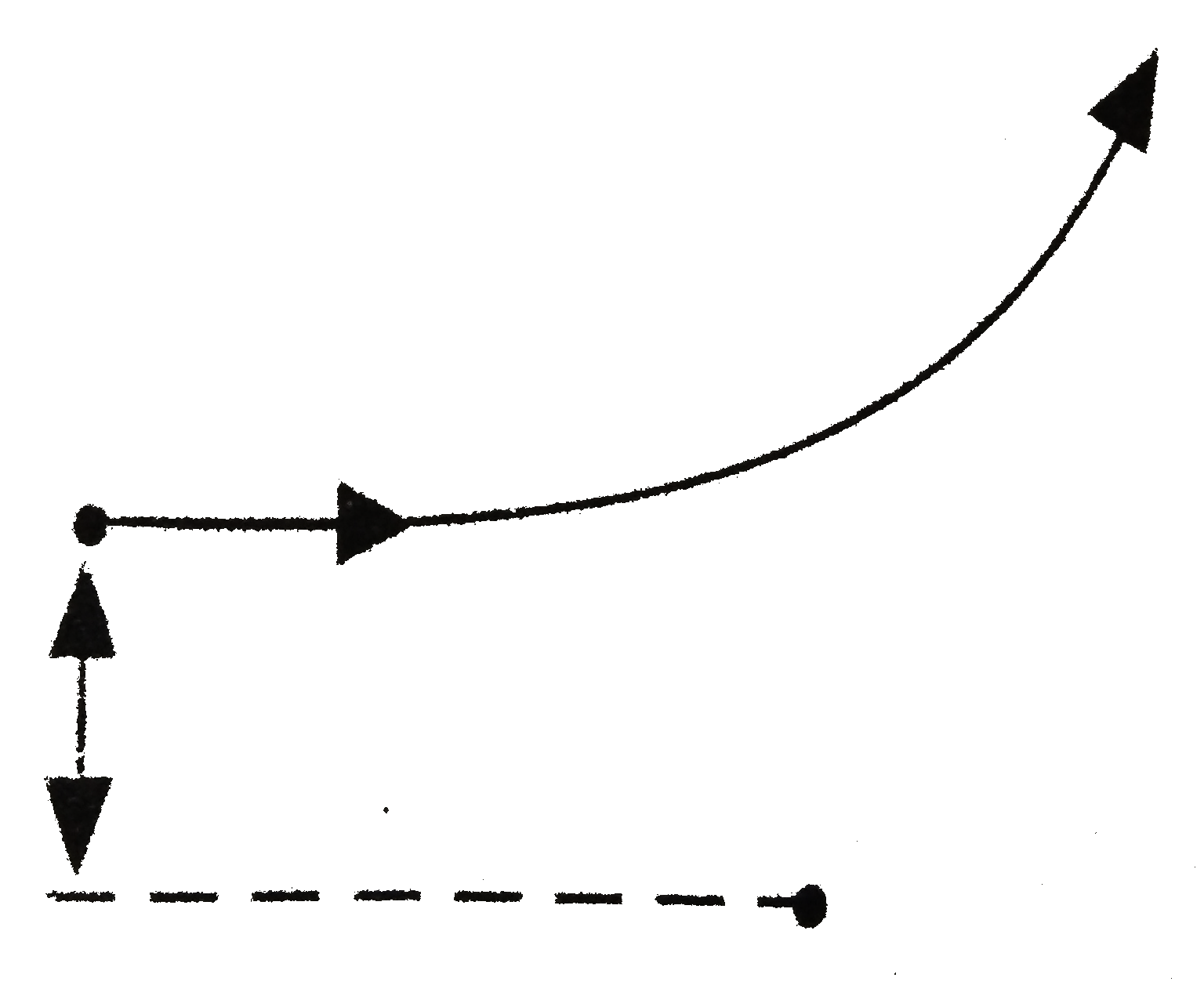
(a) Is the angular momentum of the second particular momentum of the second particle constant about some axis? Why or why not? Give reason to support your answer.
(b) Does the Coulomb force that one charge exerts on other charges changes if the other charges are brought nearby?(yes/No)
View SolutionFig. shows some of the electric field lines due to three point charges arranged along the vertical axis. All three charges have the same magnitude.
(a) What are the signs of each of the three charges? Explain your reasoning.
(b) At what points(s) is hte magnitude of hte electric field the smallest? Explain your reasoning. Explain how the fields produed by each individual point charge combine to give a small net field at this point or points.
(c ) Two point charges q and -q are placed at a distance d apart. What are the points at which the resultant electric field is parallel to the line joining the two charge?
 .
.
View SolutionTwo point charge Q and 4Q are fixed at a distance of 12cm from each other. Sketch lines of force and locate the neutral point, if any .
View SolutionIs an electric field of the type shown by the electric lines in fig. physically possible?
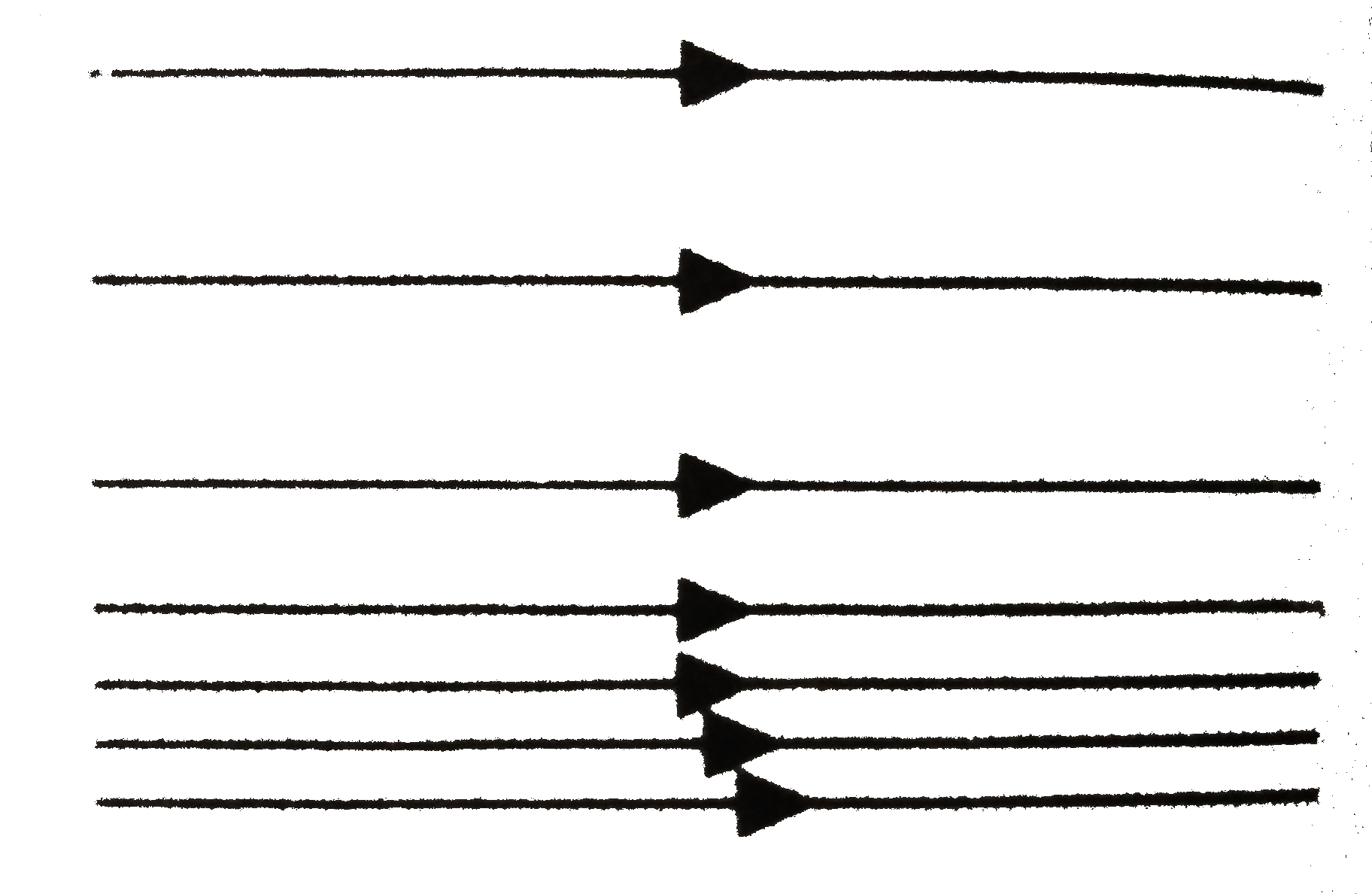 .
.
View SolutionFig. shows three electric field lines.
(a) What is the direction of the electrostatic force on a positive test charge placed at points A and B ?
(b) At which point A or B, will the acceleration of the test charge be greater if the charge is released?
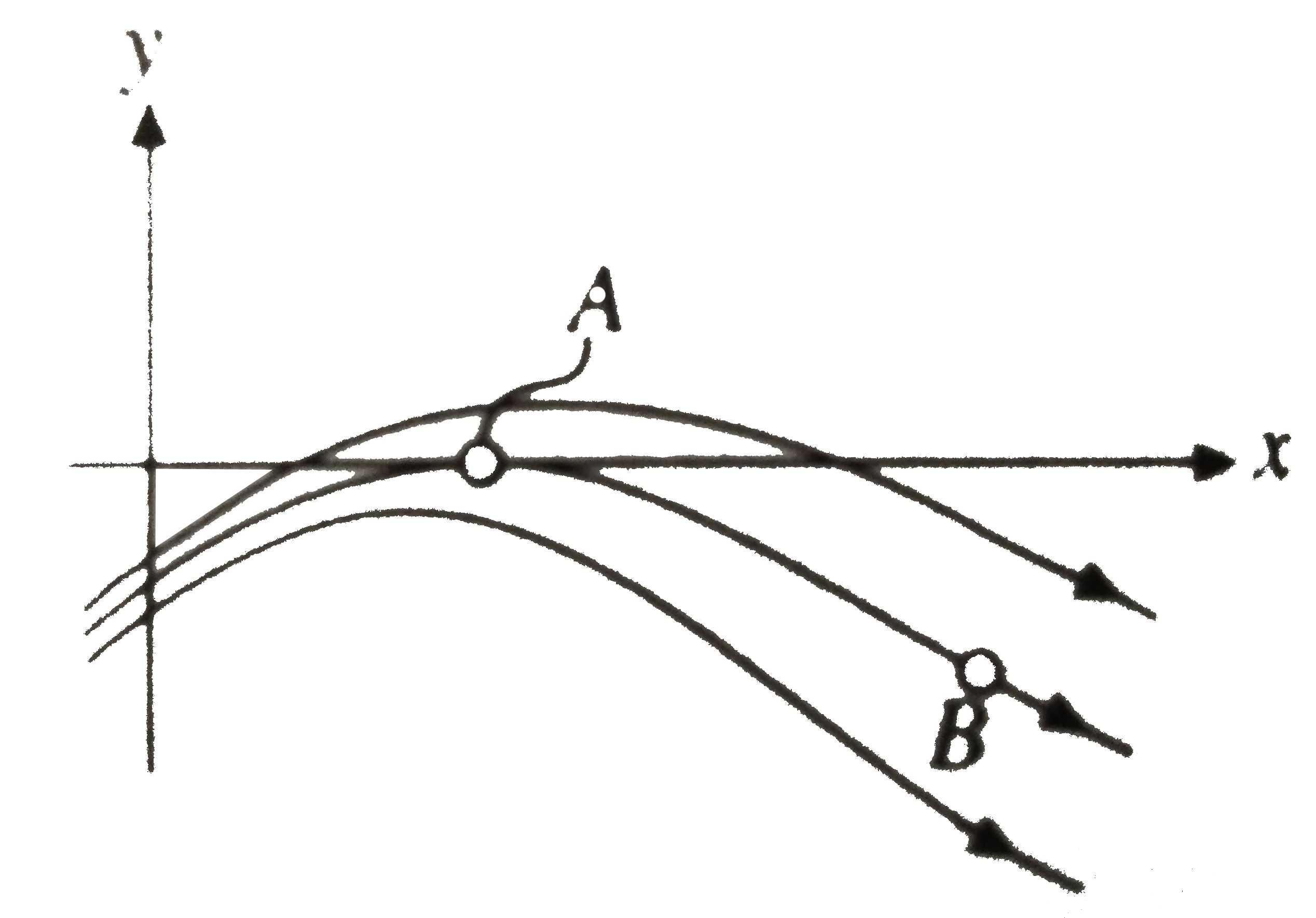 .
.
View SolutionIn fig, two particles, each of charge -q are arranged symmetrically about the y-axis, each producing an electric field at point P on the y-axis.
 .
.
(a) Are the magnitudes of the fields at P equal?
(b) Is each electric field directed towards or away form the charge producing it ?
(c ) Is the magnitude of the net electric field at P equal to the sum of the magnitudes E of the two field vectors (is it equal to 2E)?
(d) Do the x-components of those two field vectors add or cancel?
(e ) Do their y-components add or cancel?
(f) Is the diretion of the net field at P that of the canceling components or the adding components?
(g) What is the direction of the net field?
View SolutionIn fig. a plastic rod in the form of circular are with charge +Q unformly distributed on it produces an electric fieldof magnitude E at the centre of curvature (at the origin). In fig., more circular rods with identical umform charges +Q are addes until the circle is complete. A fifth arrangement (which would be labeled e) is like taht in d except that the roed in the fourth quadrant has charge-Q. Rank all the five arrangements according to the magnitudes of the electric field at the center of curvature, greatest first.

View SolutionFigure shows that E has the same value for all points is front fo an infinitely charged sheet. Is this reasonable? One might think that the field should be stronger near the sheet because the charges are so much closer.
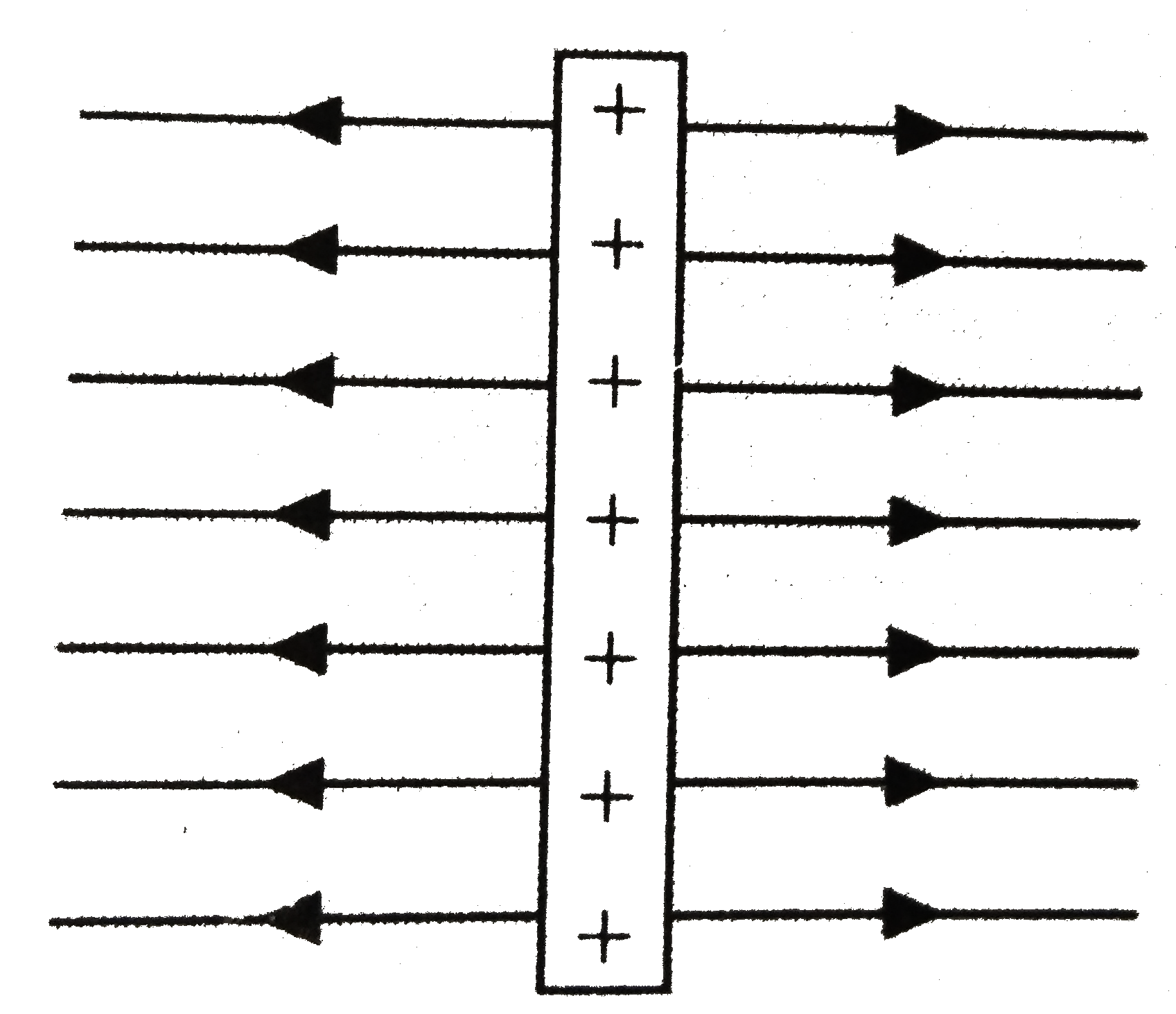
View SolutionFigure shows the tracks of three charged particles in a unform electrostatic field projected parallel to a plate with the same velocity. Give the signs of the three charges. Which of the three charges. Which of the three particles has the highest charge-to-mass ratio?
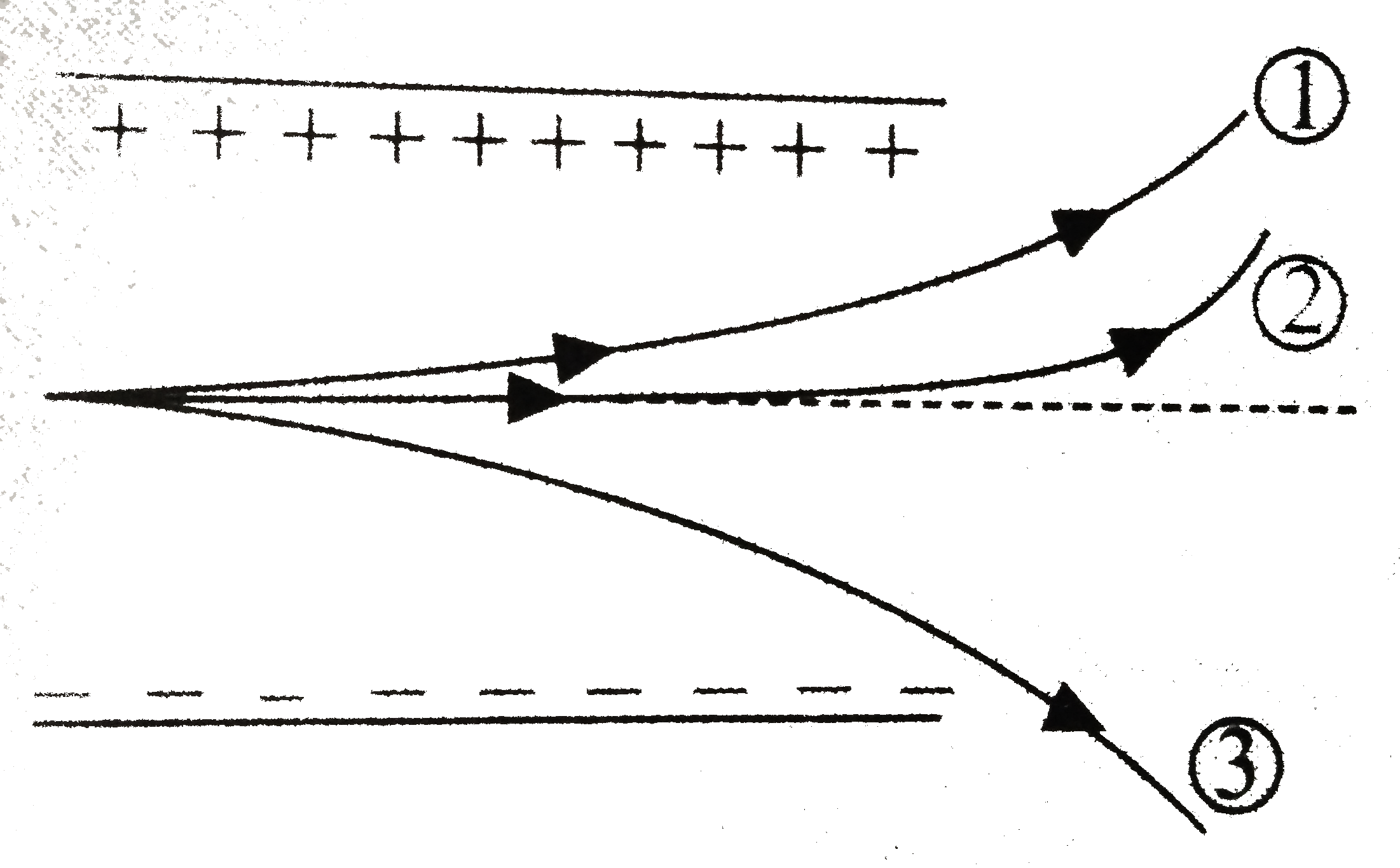
View SolutionThree small spheres x,y, and z carry charges of equal magnitudes and with signs shown in fig. They are palced at the vertices of an isosceles triangle with the distance betwwen x and y equal to the distance between x and z. sphere y and z are held in place, but sphere x is free to move on a frictionless surface.
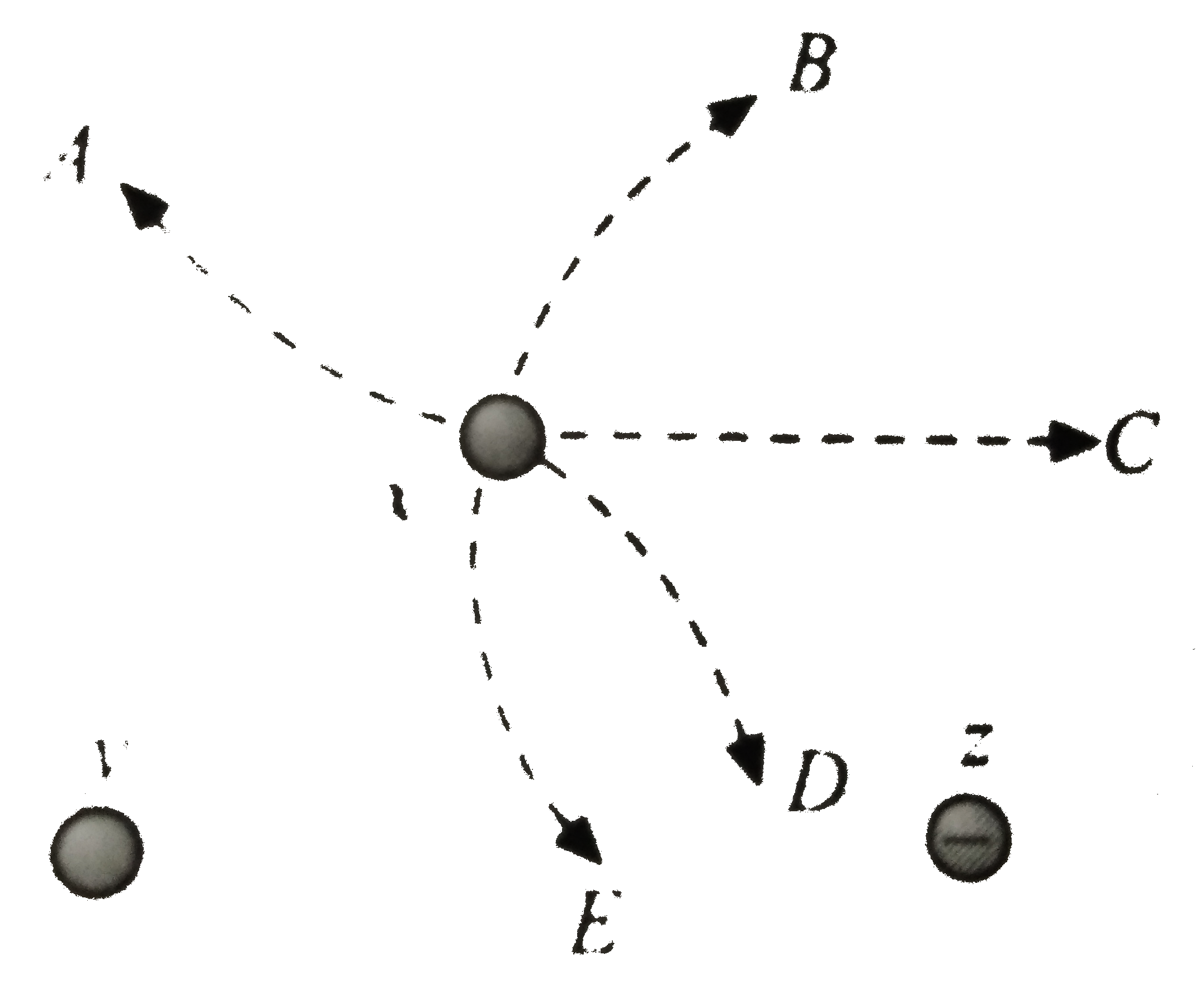
(a) waht is the direction of hte electric force on sphere x at the point shown in the figure?
(b) Which path is sphere x likely to take when released?
View SolutionTwo identical positive charges are fixed on the y-axis, at equal distances from the origin O. A particle with a negative charges starts on the x-axis at a large distance from O. moves along the x-axis passes through O, and moves far away from O on the other side. Its acceleration a is taken as positive along its direction of motion. Plot acceleration a of the particle against its x-coordinate.
View SolutionAn electric field is defined in terms of `q_(0)` a small positive charge. If the definition was in terms of a small negative charge of the same magnitude, then compared to the original field the newly defined electric field.
(a) would point in the same direction and have the same magnitude.
(b) would point in the opposite direction and have the same magnitude.
(c ) would point in the same direction and have the different magnitude.
(d) would point in the opposite direction and have the different magnitude.
View SolutionThree identical positive charges Q are arranged at the vertices of an equilateral triangle. The side of the triangle is a. Find the intensity of the field at the vertex of a regular tetrahedron of which the triangle is the base.
View SolutionTwo point charges `+5xx10^(-19)C and +20xx10^(-19)C` are separated by a distance of 2m. The electric field intensity will be zero at a distance d=………. From the charges of `5xx10^(19)C`.
View SolutionAn electron (mass `m_(e )`)falls through a distance d in a uniform electric field of magnitude E.
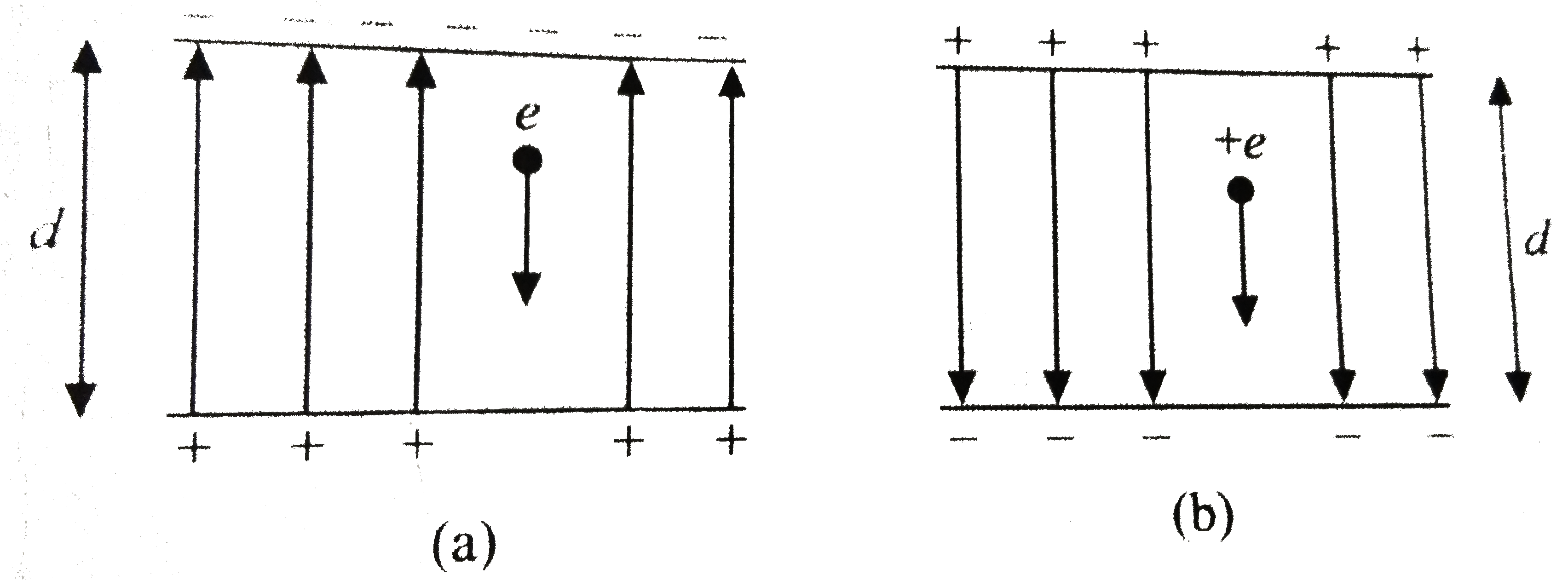 ,
,
The direction of the field is reversed keeping its magnitudes unchanged, and a proton(mass `m_(p)`) falls through the same distance. If the times taken by the electrons and the protons to fall the distance d is `t_("electron")` and `t_("proton")` respectively, then the ratio `t_("electron")//t_("proton")`.
View SolutionTwo charged metal plates in vacuum are 10cm apart. A uniform electric field of intensity `(45//16)xx10^(3)NC^(-1)` is applied between the plates. An electron is released between the plates from rest at a point just outside the negative plate.
(i) Calculate how long (t) will the electron take to reach the other plate?
(ii) At what velocity (v) will it be electron take to hits the other plate?
View SolutionTwo idential point charges Q are kept at a distance r from each other. A third point charge is placed on the line joing the above two charges such that all the three charges are in equilibrium. The third charge
(a) should be of magnitude q=………..
(b) should be of sign .......
(c ) should be placed ........ .
View SolutionTwo point electric charges of unknown magnitudes and signs are placed a certain distance apart. The electric field intensity is zero at a point not between the charges but on the line joining them. Write two essential conditions for this to happen.
View SolutionTwo pieces of plasitic a full ring and a half ring, have the same radius and chage density. Which electric field at the center has the greater magnitude? Define your answer.
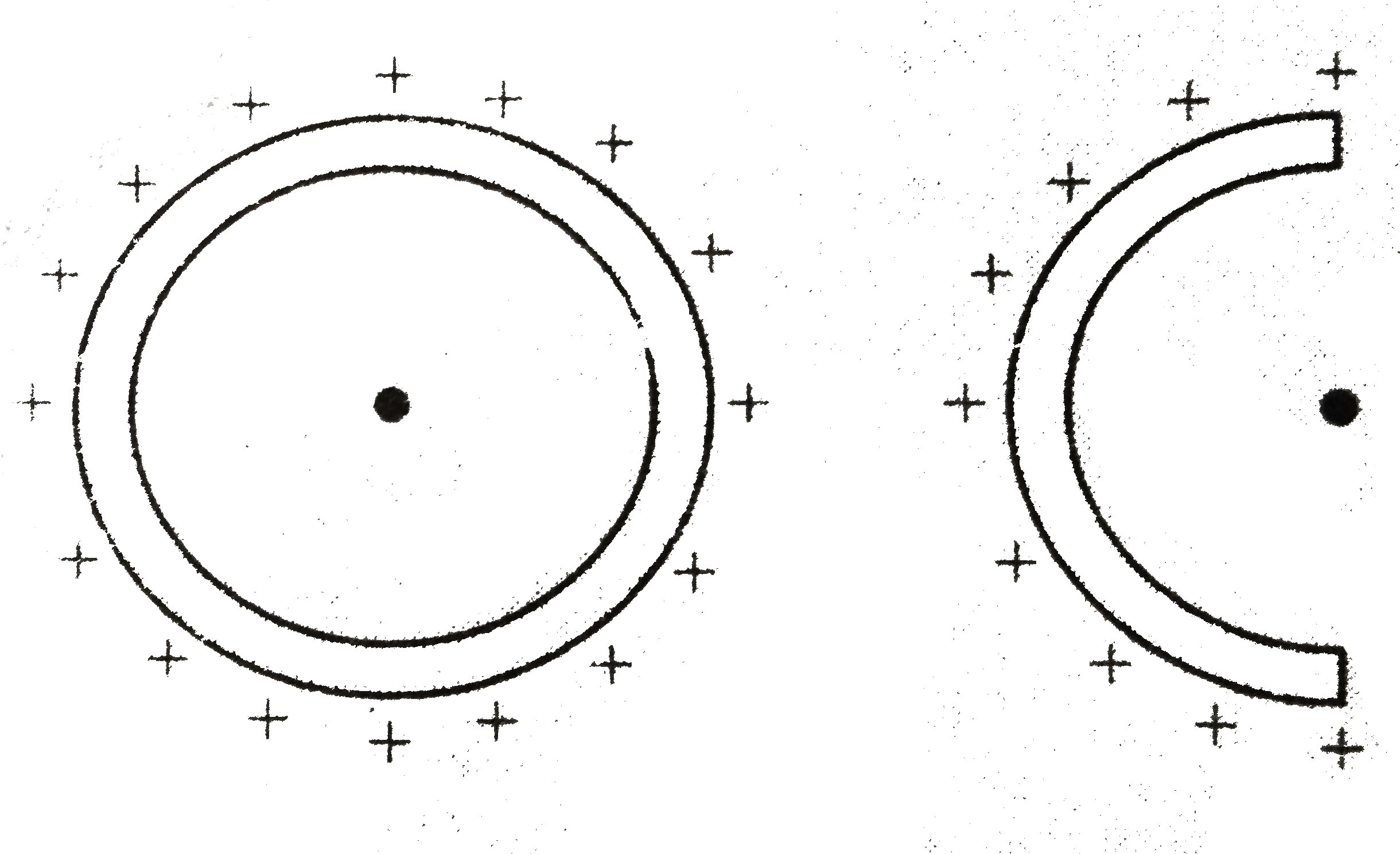
View SolutionA droplet of ink in an industrial ink-jet printer carries a charge of `1.6xx10^(-6)C ` and is deflected onto the by a force of `3.2xx10^(-4)N`. Find the strength of the electric field to produce this force.
View SolutionTwo particles A and B having charges ` 8.0 xx 10 ^(-6) C` and `-2.0 xx 10(-6) C` respectively are held fixed with a. separtion of 20cm. Where should a thired charged. particle be placed so that it dose not experience a net electric force?.
View SolutionTwo point charge `+-q` are placed on the axis at `x= -a` and `x= +-a`, as shown in fig.
(i) Plot the variation of E along the x-axis.
(ii) Plot the variation of E along the y-axis.
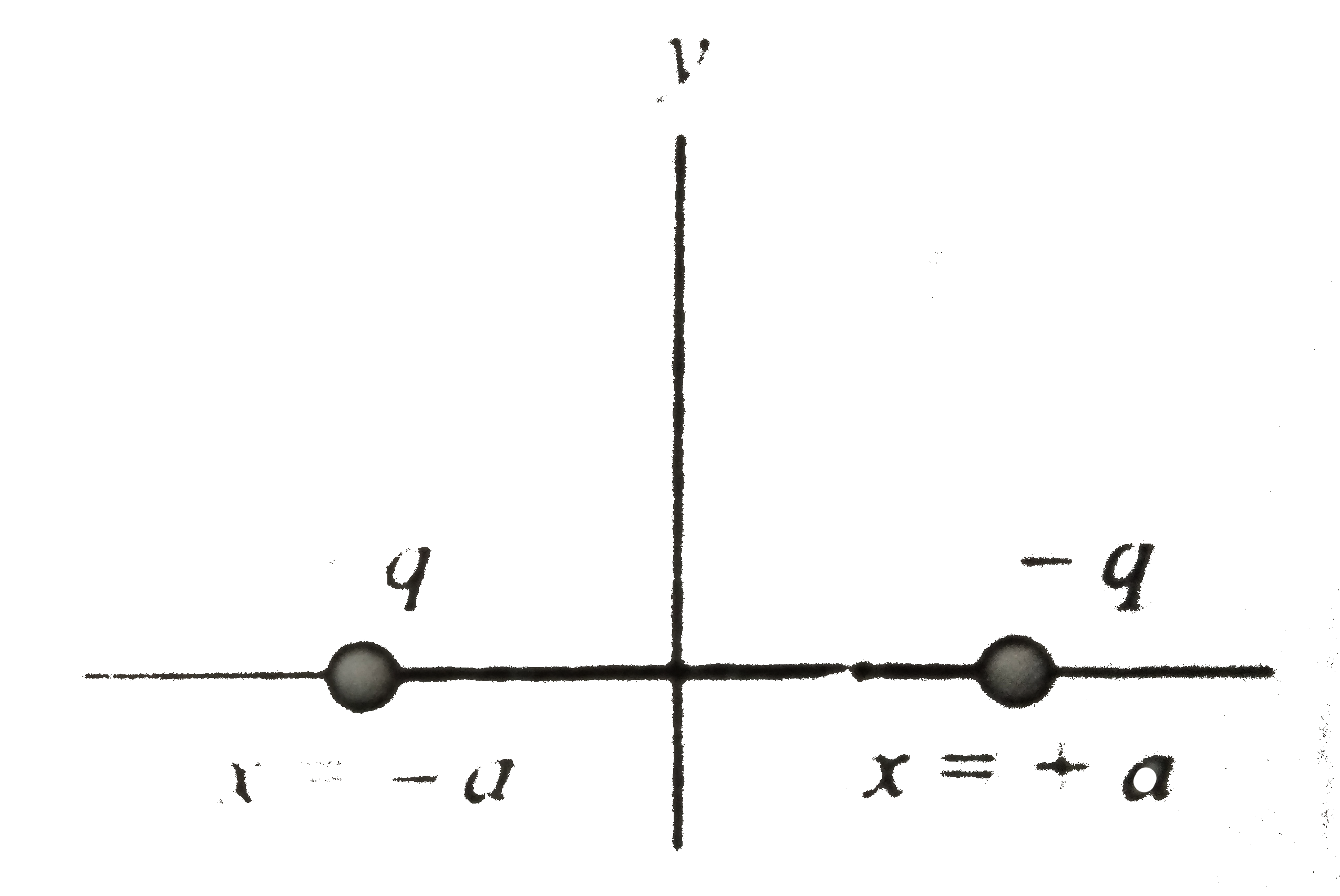
View SolutionTwo point-like charge a and b whose strengths are equal in absolute value are positioned at a certain distance from each other. Assumeing the field strenght is positive in he direction of the r axis. Determine the sign of the charge for each distribution of the field strenght between charge for each distribution of the field strenght between charges shwon in fig.

View SolutionAn electron moving in a gravitational free space enters a unifrom electric field E with an initial velocity shown in fig.
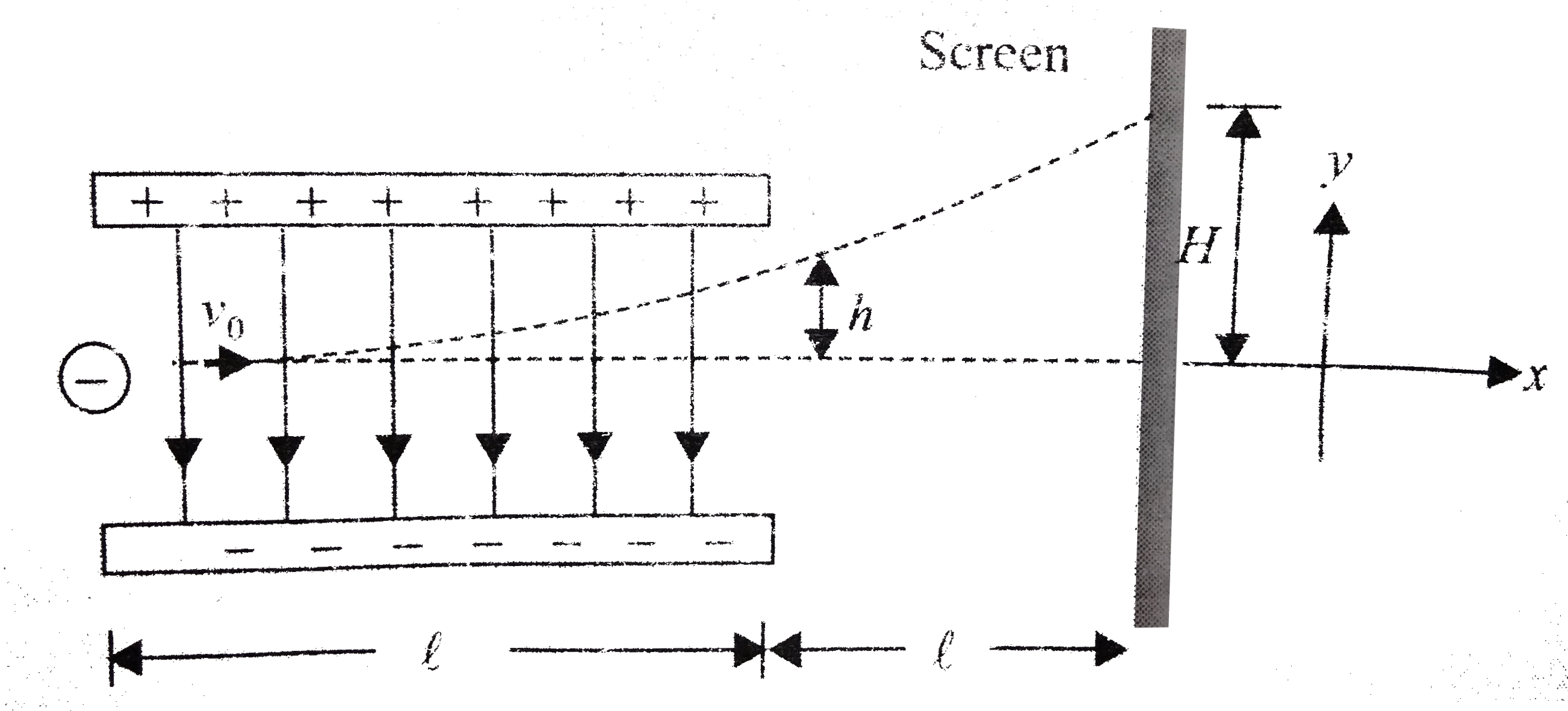 .
.
(a) Find the deflection distance h in the field .
(b) Find an expression for the velocity of electron when it just emerage from the field.
(c ) Find an expression for the total deflection distance H at a vertical screen placed at a distance l from the region of uniform field .(Assume that the field abruptly ends outside the field. ).
View SolutionProtons are projected with an initial speed `v_(i)=6kms^(-1)` from a fileds-free region `vec(E ) =-900hat jNC^(-1)` present above the plane as shown in fig. The initial velocity vector of the protons makes an angle u with the plane. The proton are to hit a target that lies at a horizontal cross the plane and enter the electric field. Find the angle `theta` at which the protons must pass through the plane to strike the target.
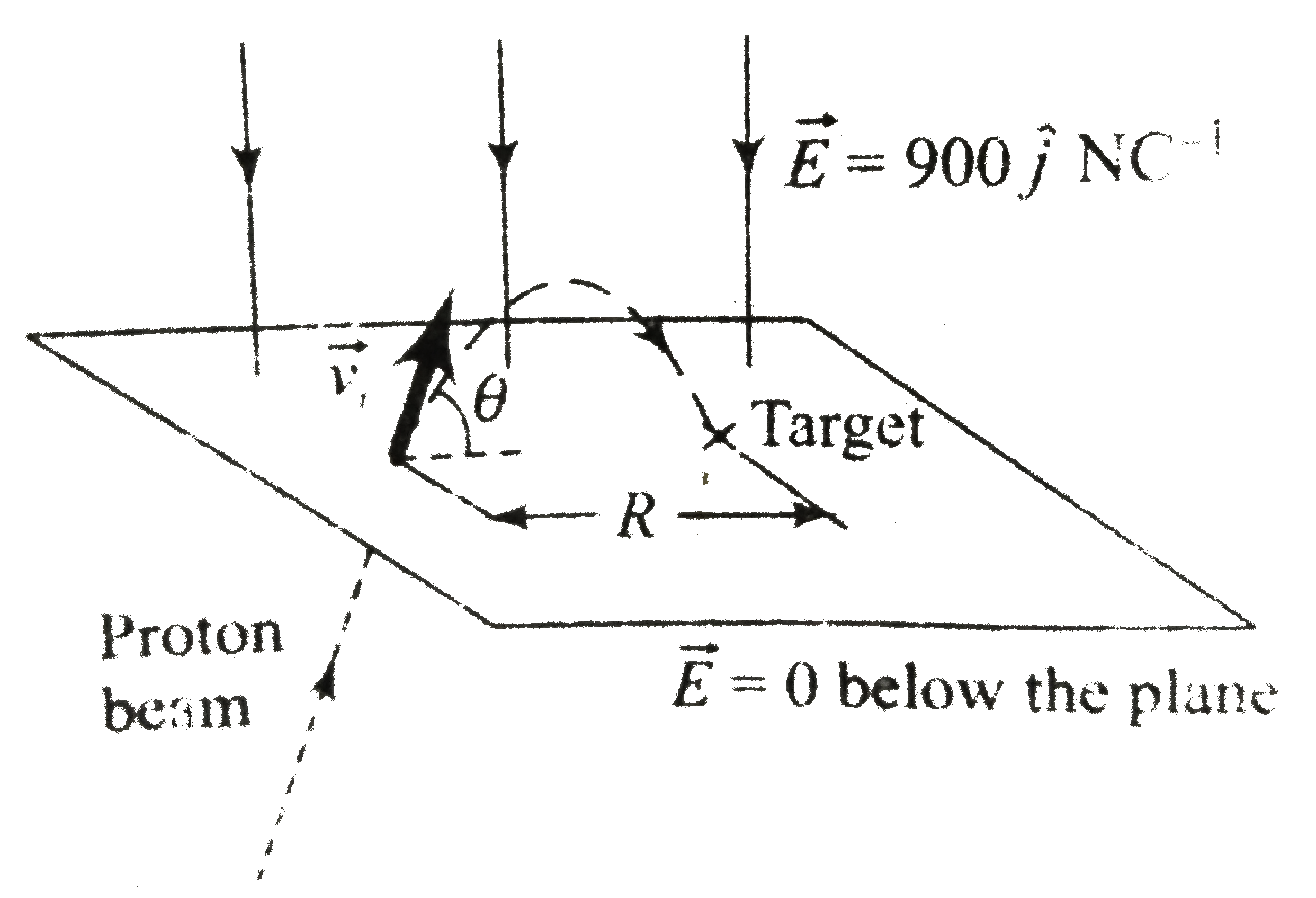
View SolutionTwo indentical point charges having magnitude q each are placed as shown if fig. If we place a negative cahrge (of magnitude -q and mass m)at the midpoint of charges and displaced along the x-axis, examine whether it will perform simpe harmonic motion. If yes then find the time period of oscillation of the particle.
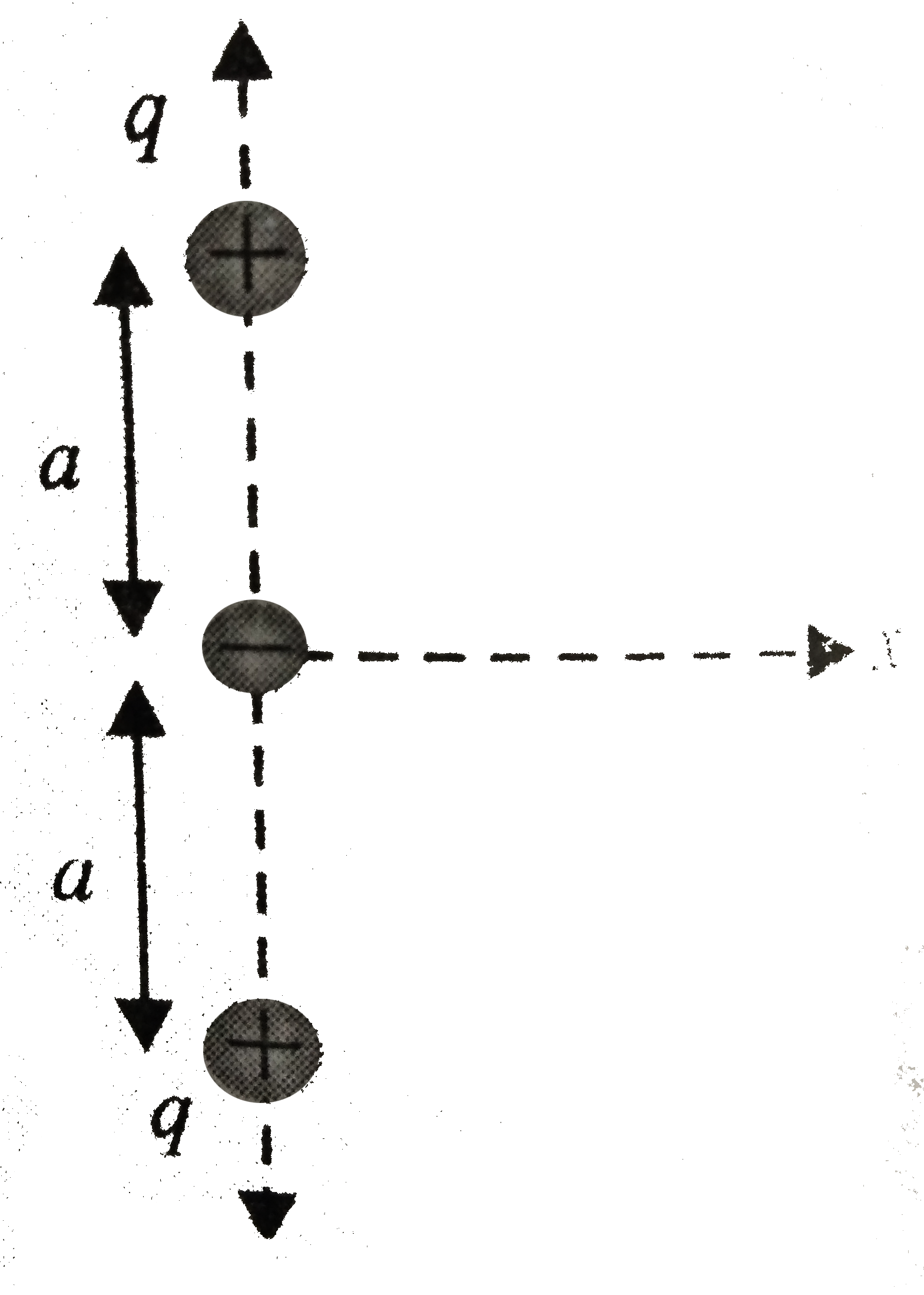
View Solution
Exercises questions and complete solutions for chapter COULOMB LAW AND ELECTRIC FIELD of CENGAGE PHYSICS (HINGLISH) of Class 12